Ontario Nature Blog
Receive email alerts about breaking conservation
and environmental news.
© Lora Denis
Male sharp-tailed grouse © Lydian Dotto
Sharp-tailed grouse is a chicken-like bird that inhabits grasslands, brushy prairies and edges of woodlands. The species ranges from eastern Quebec to central BC and into the Northwest Territories and the Yukon.
Male grouse engage in a colorful mating dance known as lekking. A lek is a dancing ground in open areas where the males gather in the spring to defend their territories and court females. Lekking displays typically occur from March to July, with the peak period in April and May. Lekking also occurs less frequently in the fall.
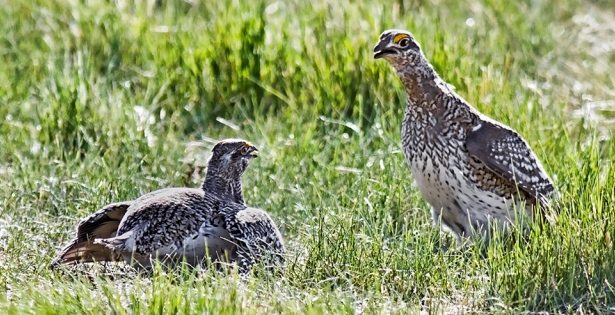
The males spread their wings and circle each other, inflating yellow combs over their eyes.
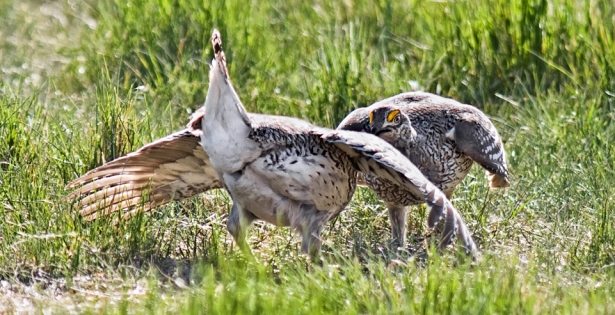
The elaborate ritual includes squatting with out-stretched wings, pointing tails in the air, and circling one another.
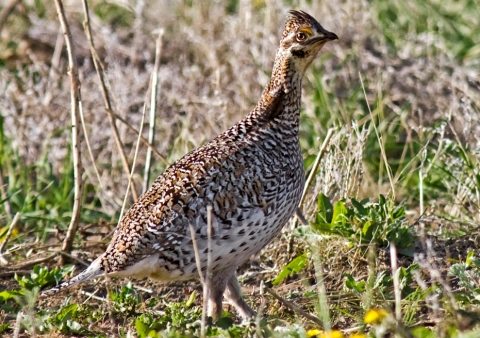
They stomp their feet rapidly, utter booming noises and leap at each other with wings spread.
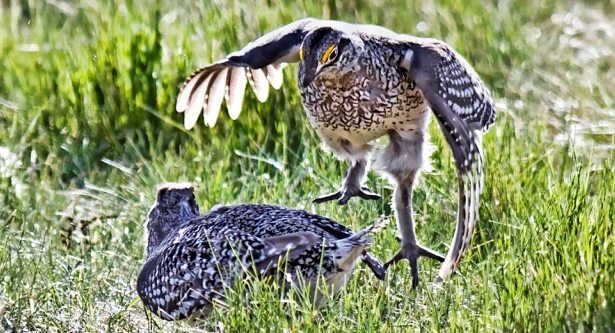
Dominant males hold the centre of the lek, while less dominant males and juveniles are generally found around the edges.
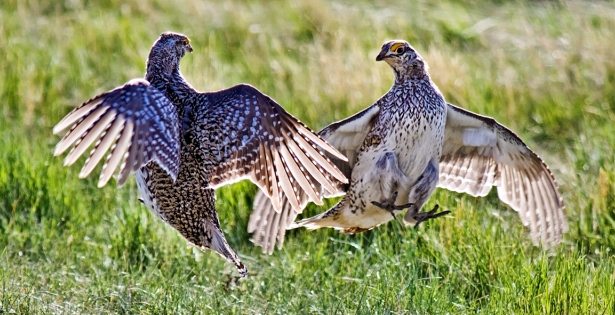
During the spring breeding season, females visit the lek to find a mate, usually selecting dominant males from the centre. Once mating is completed, females leave the lek to find an area with denser vegetation to build a nest. They raise their young by themselves. If a female’s first nest fails, she may visit the lek to mate a second time.

Gananoque Lake Nature Reserve © Smera Sukumar
How far are your blinds from the lek, and what size of lens do we use?
would they be eating my parsley up ?
Hello Ruth,
The sharp-tailed grouse can be found in Ontario on and north of Manitoulin Island in various locations. If you happen to live on or north of Manitoulin, this remarkable bird may be in your area.
Sharp-tailed grouse typically eat insects, grasses, sedges, small fruit, grains and tree buds. It is not as likely that sharp-tailed grouse are eating your parsley. Rabbits may be eating your parsley instead.
ON Noah